Weekly birding round-up: 7 - 13 Nov
The curtains were sweeping across the stage of autumn this past week, with rapidly dwindling numbers of notable birds of all kinds to be found. That said, Shetland had an ace in the hole to play, a fair influx of Pallid Swift was under way, and a scatter of rare wheatears were bound our way.
Word on the street has it that some of the visiting birders to Shetland this autumn were somewhat disappointed by the relative paucity of rarities on offer. Maybe the largesse of recent years has driven expectation to unreasonable levels, and this year marked a return to something approaching normal, whatever normal really is these days.
And it’s not like it’s been exactly shabby up there this year either – a male Siberian Thrush going full garden Blackbird-stylee in the open is hardly to be sniffed at, nor the recent pair of Oriental Turtle Dove in the south Mainland. And that’s not to mention the arrival of several Black-faced Bunting, including two in the past fortnight and, this week, another very serious Sibe indeed – a Siberian Rubythroat up on Unst.
Initially found by Dave Cooper on 7th on the road to Skaw, the bird was seen initially frustratingly briefly, and not again by nightfall that day. Was this the end of the story?
Well, no, for lightning struck again for Dave on 9th with another brief encounter with the bird, a female, in Norwick. While the wait for a truly twitchable mainland British male bird goes on, it’s timely to look back at the one and only male to be found to date on the mainland – that seen in the afternoon of 19th October 1997 in Dorset at Osmington Mills.

At the time this was just the second British record of the species, following our first over 20 years beforehand on Fair Isle (Shetland), on 9th-11th October 1975. A truly mythical species in 1997, and a bird whose arrival was greeted with understandable euphoria by those who managed to get to Osmington Mills before nightfall, and a dose of scepticism in some quarters with a variety of colourful and frankly defamatory origin stories suggested for the bird. Pleasingly, history has gone on to prove that the Dorset bird was merely the vanguard of many more vagrants of its kind to follow. Including the bird trapped and ringed last week on Orkney, this week’s bird is the twentieth British record.
But to return to where we began, with Shetland’s quality as an autumn rarity destination – it’s not been such a bad autumn up there after all, and with this week’s Siberian Rubythroat being the sixteenth record of its kind for the archipelago, it surely remains the destination of choice for anyone hoping to catch up with one.
A juvenile Eleonora’s Falcon, seen chasing Starling on Islay (Argyll & Bute) at Loch Gruinart RSPB in the early afternoon of 12th this week was certainly something of a turn up for the books – and, indeed, if accepted it will be the latest example of its kind on the books for Britain by some margin.
Our 11 prior accepted British birds have all, bar two outliers, all spanned the period of summer into early autumn. The anomalies to this rule are the well-twitched recent bird in Kent at Worth Marsh RSPB that arrived on 26th May 2022; and Britain’s second-ever record, found freshly dead in late October 1981 at Patrington (East Yorkshire).
Alas, there was no further sign of this week’s individual, last seen heading east.
While birders in Dorset might be forgiven for hoping for a Black-faced Bunting given how many have been found this autumn on both sides of the English Channel, they should perhaps take succour from the very fact that the species seems on an upward trajectory as a vagrant to these parts. Dorset, your time will surely come soon enough…
But meanwhile, history tells us that Pine Bunting remains a properly rare creature in the county – Dorset has just the two records to date, one way back on 15th April 1975 on Portland; and another one-day bird trapped and ringed, also on Portland, on 26th October 2016. A twitchable example would always be warmly received – and potentially also by birders from neighbouring Devon, Somerset, Wiltshire and Hampshire, for their counties can muster but one past bird, a long-staying male in Devon at Wembury on 27th January – 17th March 2004. It’s been a while, or not at all, for birders in the region.
This week they got their chance. A cracking female Pine Bunting was found in the morning of 13th at St Aldhelm’s Head Quarry but, frustratingly, it was moving with a mobile flock of Yellowhammer.
Pine Bunting seen briefly with mobile Yellowhammer flock at St Aldhelm's Head Quarry at 1030hrs & not relocated as of 1250hrs. Ltd parking available in Renscombe car park, otherwise park in Worth Mattravers village car park and walk down, staying out of private fields @dorsetbirdclub.bsky.social
— Phil Saunders (@beardybirder.bsky.social) 13 November 2025 at 12:58
[image or embed]
Happily it was to be seen in the area off and on into the afternoon, and showed well at times. With any luck it’ll stick around into the weekend…
Finally, though let’s not so presumptuous as to write them off entirely, the seabirds calmed down this week and started to resemble something like early winter fare. Pick of them was the returned adult Pacific Diver in Co.Cork, still present at Crookhaven on 10th-13th.
A couple of White-billed Diver were seen off Papa Westray (Orkney) on 7th.
Numbers of Great Shearwater continued to contract, with 425 birds logged around Britain and Ireland during the week, and a peak count of264 birds seen from Bridges of Ross (Co.Clare) on 7th.
A mere handful of Leach’s Petrel were noted lately – single birds off the Scillonian on 7th, taken into care at St Agnes (Cornwall) on 10th, and off Ballycotton (Co.Cork) on 11th; and two seen from Dungeness (Kent) on 10th.
Little Auk were similarly denuded, with singletons seen from West Wemyss (Fife) on 8th, Spurn (East Yorkshire) on 10th, and Ballycotton (Co.Cork) on 11th; two from Fife Ness (Fife) on 9th; one from Troon (Ayrshire) on 12th; and, on 13th, four from Sumburgh (Shetland), and two off Peterhead (Aberdeenshire).
Finally, as for Pomarine Skua, a similar story – single birds seen from Landguard NR (Suffolk) on 7th, East Pentire (Cornwall) on 8th, Fife Ness (Fife) on 9th, Cape Cornwall (Cornwall) on 10th, Newlyn (Cornwall) on 11th, and South Gare (Cleveland) on 13th.
Long-legged beasties next – and, as we expect now, still a good scatter of Glossy Ibis all over.
Variety came in the form of a Purple Heron seen over Weddington (Kent) on 8th, and a Night Heron reported over Dungarvan (Co.Waterford) on 11th.
Moving onto the rarity duckpond, the honkers and quackers kick off with The Goose Formerly Known As Canada - two interior Todd’s Canada Goose were seen at Ballygilgan NR (Co.Sligo) on 9th, with a hutchinsii Richardson’s Cackling Goose also still present there on 9th; while further hutchinsii birds were seen this week at Rockcliffe Marsh (Cumbria) still on 7th-11th, and on Islay (Argyll & Bute) on 10th still. A possible parvipes Lesser Canada Goose was also seen on Islay on 7th, and a Cackling Goose was still on the island on 12th-13th.
Highland & Caithness supplied sightings of Snow Goose at Beauly Firth still on 9th, and near Kirkhill on 10th.
A Black Brant was seen on 8th at Seasalter (Kent), with another reported on 9th from Gibraltar Point NNR (Lincolnshire).
Onto the quackers, in Dorset the recent female / first-winter drake Baikal Teal at Abbotsbury Swannery, last seen there on 2nd, was remarkably replaced there on 7th by a drake. What, indeed, are the odds? This new drake was again seen there on 13th.
A female / first-winter drake Blue-winged Teal was seen on 8th at Hayle Estuary RSPB (Cornwall).
Recent Green-winged Teal remained at Tain Links (Highland & Caithness) and Colt Crag Reservoir (Northumberland) on 7th, and at Leighton Moss RSPB (Lancashire & North Merseyside) on 9th. Additional sightings came from Ouse Washes RSPB (Cambridgeshire) on 8th, and Barra (Western Isles) again on 11th.
Settled American Wigeon remained at Bishop Middleham (Co.Durham) on 7th-10th, Newshot Island (Clyde) on 8th-13th, and on Loch of Spiggie (Shetland) again on 10th and 13th. Further sightings came from Ballygilgan NR (Co.Sligo) on 8th, and Darnconner Quarry (Ayrshire) on 10th.
Numbers of Ring-necked Duck remained fairly static this week, with 18 birds logged across Britain and Ireland. Two sites enjoyed multiple birds – duos seen at Ardcloony (Co.Clare) on 10th, and Loch Shiel (Highland & Caithness) on 11th-12th.

Two Lesser Scaup remained in Cornwall at Helston on 7th-11th, and two also were present at Tacumshin (Co.Wexford) on 9th, leaving one still present at the latter site by 13th. Singletons were present at Chew Valley Lake (Somerset) still on 7th; Ditchford GPs (Northamptonshire) on 8th-11th still; on Portmore Lough RSPB (Co.Antrim) on 8th still; on Tiree (Argyll & Bute) still on 9th; on Abberton Reservoir (Essex) on 7th-13th; at Broom GPs (Bedfordshire) on 9th; at Swithland Reservoir (Leicestershire) on 11th-13th; on South Uist (Western Isles) on 11th-12th; and on Staines Reservoir (Surrey) on 12th.
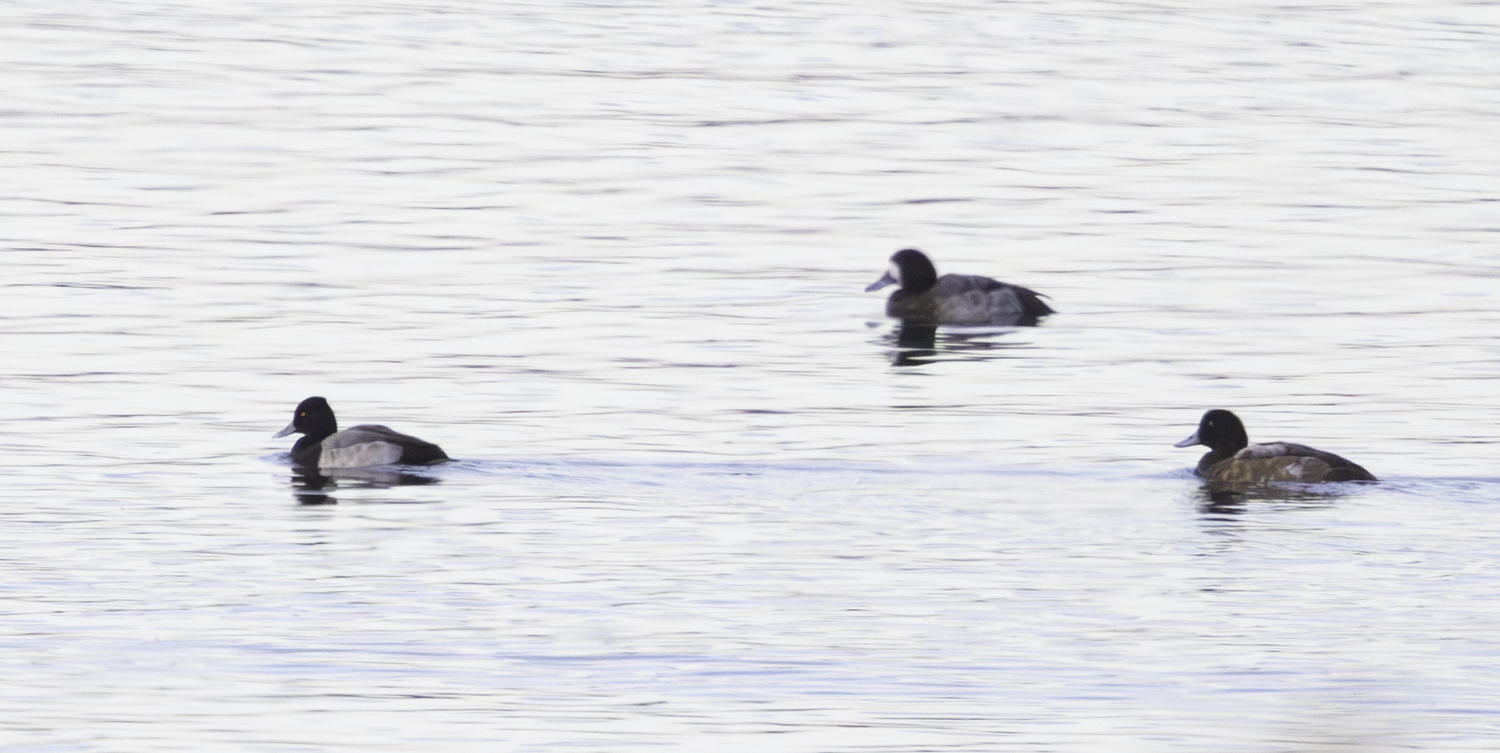
The female Ferruginous Duck remained at Brampton GPs (Cambridgeshire) on 8th.
The drake White-winged Scoter remained in Co.Kerry at Rossbeigh on 8th-13th.
Irish Surf Scoter were present at Rossbeigh on 8th still, rising to three present there on 13th; Owenahincha (Co.Cork) on 7th and 9th; Laytown (Co.Meath) on 12th; and at Ballyheigue (Co.Kerry) where two birds were seen on 7th-11th. Scotland meanwhile enjoyed birds at Burghead Bay (Moray) on 7th-9th, with two present at Roseisle on 8th; and off Barra (Western Isles) on 10th-13th.
Finally, back to Ireland where the settled juvenile drake Harlequin Duck remained in Co.Donegal off Port Arthur Beach 8th-12th.
Our notable weekly waders were becoming ever less numerous, though we can begin with a familiar face back again for another winter on our shores – the German-ringed female Kentish Plover has survived another year and is back at Burnham-on-Sea (Somerset), being seen there this week on 9th-13th.
American Golden Plover continued to be a highlight of the past week, with lingering individuals seen at Titchwell RSPB (Norfolk) on 7th-13th still, at Rye Harbour NR (East Sussex) on 7th-13th still, Eyebrook Reservoir (Leicestershire) on 7th-11th still, and at Inch Island Lake (Co.Donegal) on 8th and 12th again. An additional bird was seen on 8th at Fife Ness (Fife), with a sighting at Balcomie Bay on 12th.
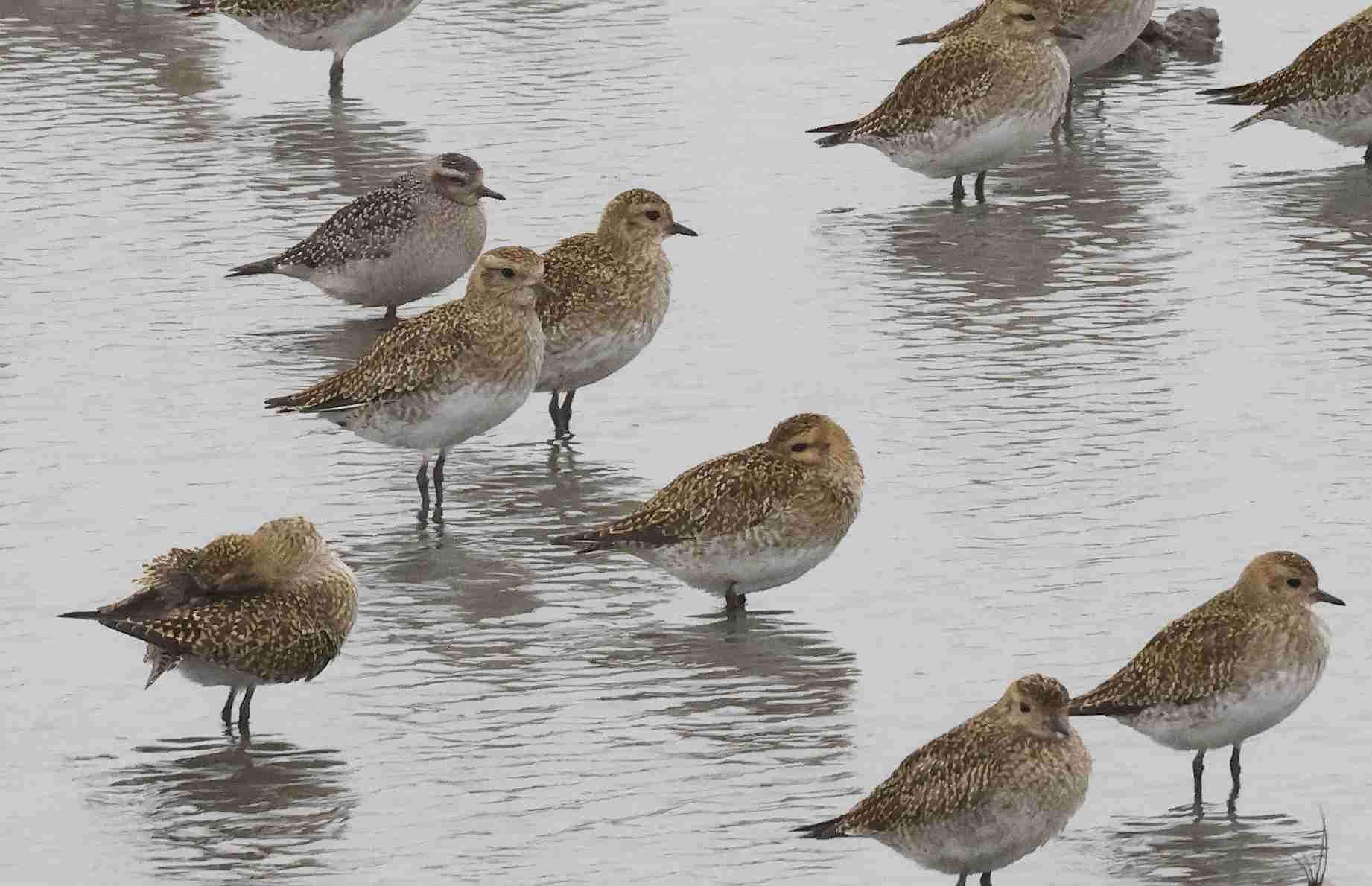
In Gloucestershire the settled Temminck’s Stint remained at Slimbridge WWT on 7th-10th; another was found on 13th at Minsmere RSPB (Suffolk).
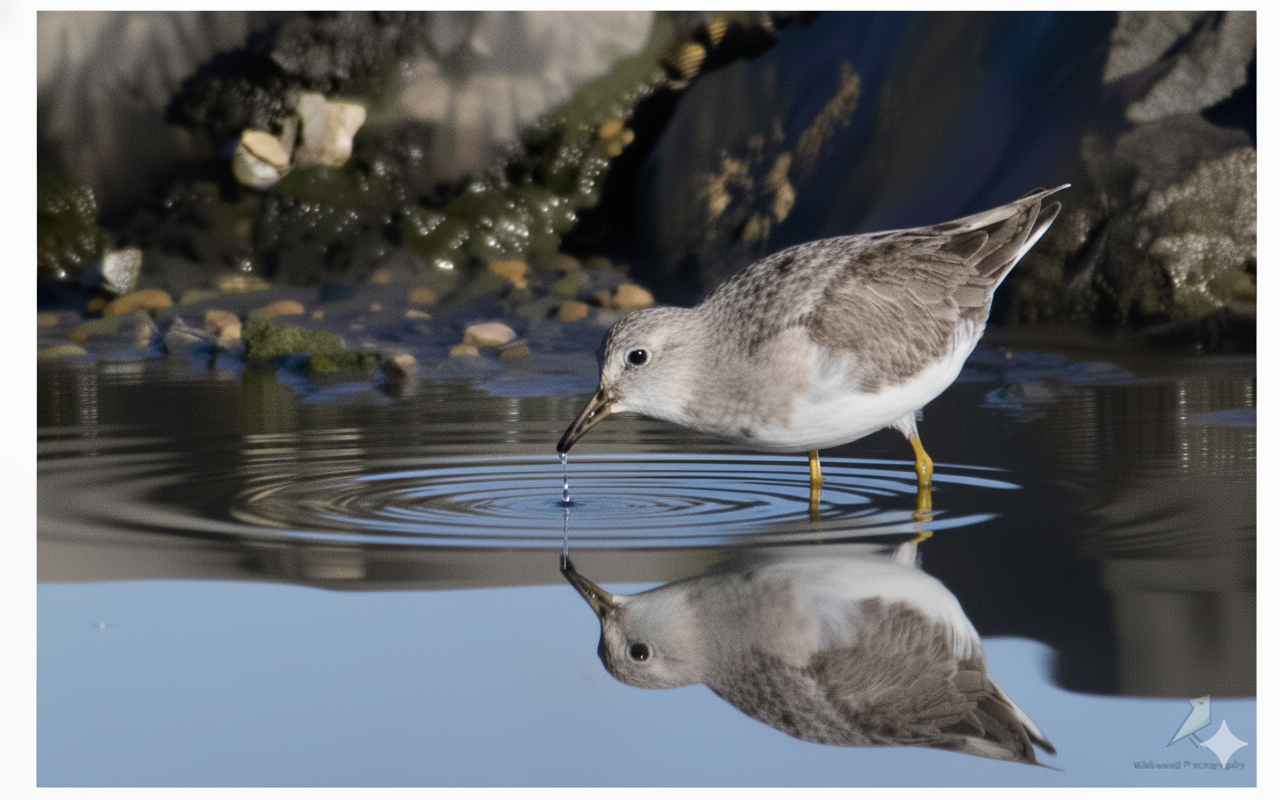
A few White-rumped Sandpiper also remained on offer – singletons on Bann Estuary (Co.Derry) on 7th still, and Myroe Levels (Co.Derry) still on 8th-12th, with two birds present there on 12th; and at Montrose Basin (Angus) on 8th still.
In Ayrshire, the Western Sandpiper was still to be seen at Maidens on 7th.
A Spotted Sandpiper was found on 13th at Ballynagaul (Co.Waterford).
The recent Long-billed Dowitcher remained at Montrose Basin (Angus) still on 10th-12th.
Two recent Lesser Yellowlegs remained on station in recent days – one still in Cornwall at Truro on 7th-12th, and on Anglesey on Inland Sea on 7th-9th. Another was seen in Co.Donegal at Inch Island Lake on 8th.
Finally, a Grey Phalarope was reported passing Thorpeness (Suffolk) on 7th; another was seen from Walmer (Kent) on 10th; and a final bird for the week at Brougham (Cumbria) on 13th.
This was a quiet week for gulls, all told. We start with a probable Bonaparte’s Gull reported from St Abb’s Head (Borders) on 7th, followed on 13th by a confirmed adult again at Ballyconneely (Co.Galway) still.
The adult Ring-billed Gull remained in Co.Louth at Blackrock on 9th.
Just a few Glaucous Gull were seen this week – birds at Burghead Bay (Moray) still on 7th; on Unst (Shetland) on 7th; on Orkney Mainland at Birsay Bay on 9th; at Black Rock Strand (Co.Kerry) on 9th; on 12th at Pool of Virkie (Shetland) and Shewalton Pit (Ayrshire); and on 13th on Whalsay (Shetland) and at Irvine (Ayrshire).
Worse still for Iceland Gull - just two seen this week, one on Papa Westray (Orkney) on 7th, and another on 13th at Gairloch (Highland & Caithness).
Finally, two Sabine’s Gull were seen from Loughshinny (Co.Dublin) on 7th, and single birds from Wadebridge (Cornwall) on 8th, and Troon (Ayrshire) on 9th.
In Co.Wexford this week the juvenile Northern Harrier continued to haunt Tacumshin through the week until 13th. Will the recent adult male put in another appearance soon?
The adult male Pallid Harrier meanwhile was again seen at Dowrog Common (Pembrokeshire) on 7th and 9th. The adult female remained in Glamorgan at Llanrhidian Marsh on 8th-12th, and WWT National Wetlands Centre (Carmarthernshire) on 13th.
Another week, another curious raptor to close the section – on this occasion, a Lanner seen in Kent at Elmley NNR on 8th.
The past week was dominated by sightings of Pallid Swift, a very pleasant late autumn find for a number of folk in recent days – at least 23 birds were recorded in Britain, with almost half as many again probable birds reported. Some sites enjoyed multiple birds – duos were seen at Dawlish Warren NNR (Devon) on 7th; North Foreland (Kent) on 8th; and The Naze (Essex) on 9th.
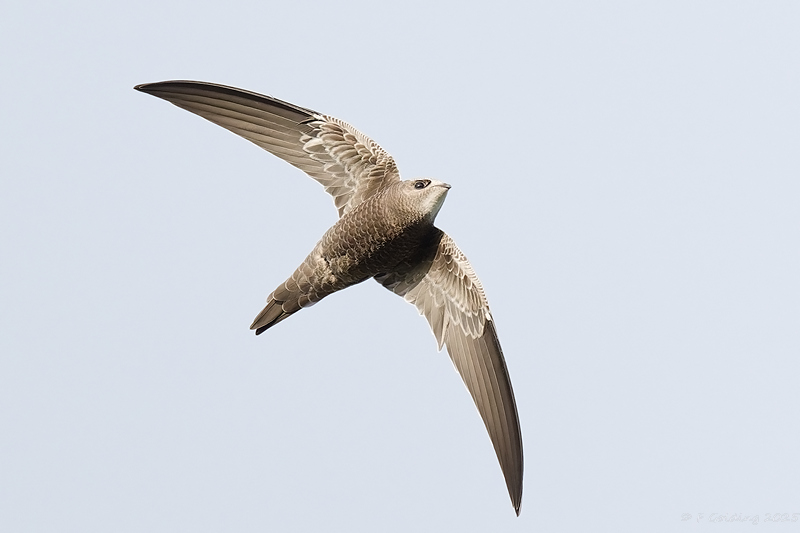
We closed the Round Up last week predicting some decent wheatears, and the past week didn’t disappoint. First out of the blocks was a male Desert Wheatear on the north Kent coast on 8th at Seasalter.

This was rapidly followed by Isabelline Wheatear on St Martin’s (Scilly) and at Spurn (East Yorkshire) on 9th.
A male murinus / phoenicuroides / rufiventris Eastern Black Redstart also made landfall on the east coast this week, being seen briefly at Withernsea (East Yorkshire) on 8th.
A Siberian Stonechat was found on Stronsay (Orkney) on 7th.
Our recent good run of shrikes continued into the week, with Suffolk once again blessed by a cracker – an Isabelline Shrike sp, thought to be a probable Duarian Shrike, present at North Warren RSPB on 9th-13th.
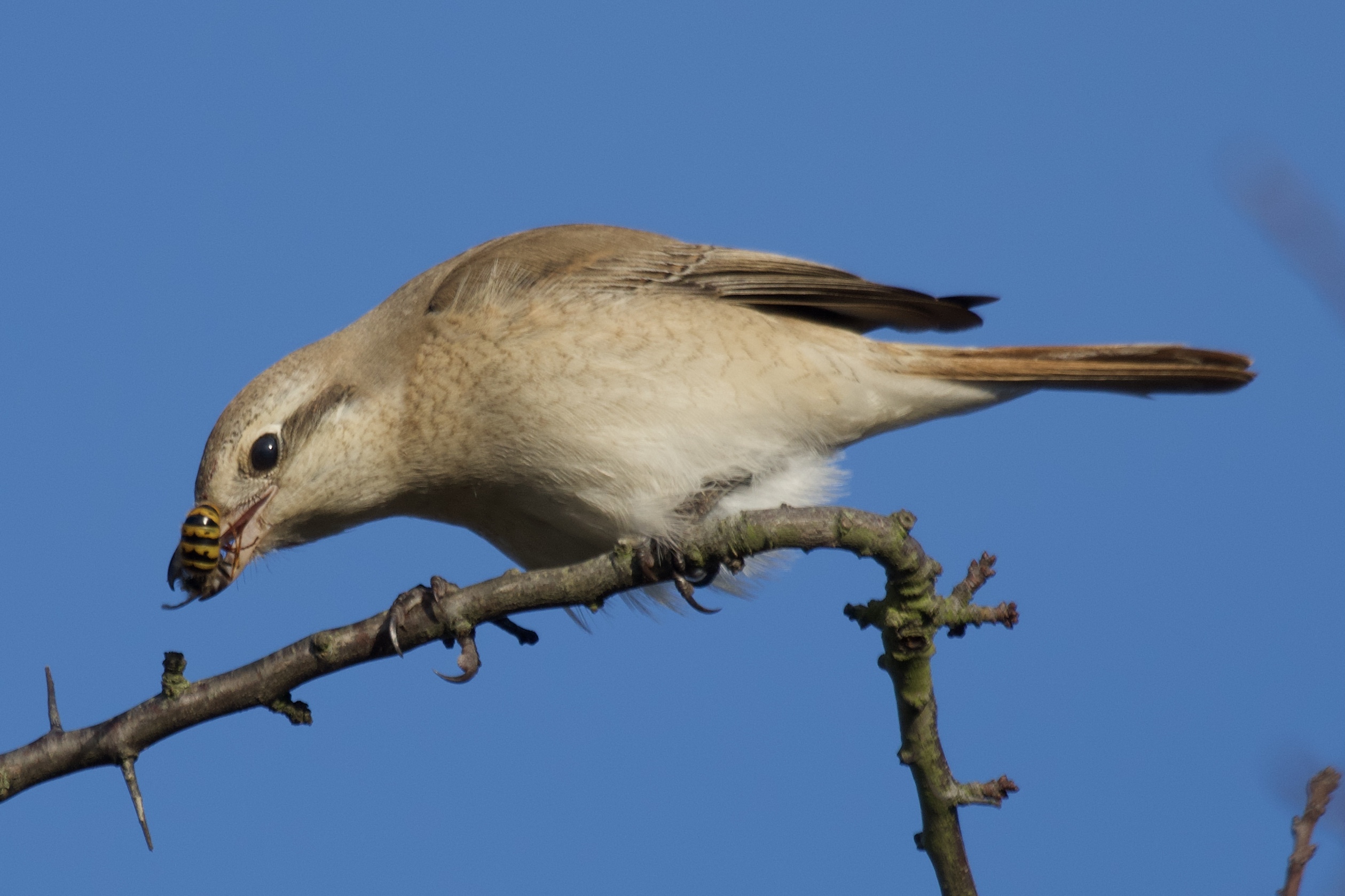
The gorgeous adult male Daurian Shrike meanwhile remained in Co.Wexford at Ring Marsh on 7th-13th.

A Red-backed Shrike was seen on Bressay (Shetland) on 10th-11th, and another was reported on 13th from Seckington (Warwickshire).
Shetland also enjoyed a Great Grey Shrike at Pool of Virkie on 11th, and Exnaboe on 12th; while in Hampshire the recent bird remained at Beaulieu Road Station on 7th-13th; and another was found on 12th-13th in West Sussex near Steyning.
Also in Shetland, one of the recent pair of meena Oriental Turtle Dove was still in the Hillwell area of Mainland on 9th.
A Hoopoe was again seen in Norfolk this week around Titchwell RSPB on 9th-12th; another was found on Anglesey at Bull Bay on 7th; and a further report came from Anglesey at Mynydd Parys on 13th.
Numbers of Waxwing picked up a little, with a shade under 100 birds reported over the course of the week. The best of these were a flock of 30 birds in Aberdeen (Aberdeenshire) on 11th rising to 33 birds present in the city on 12th.
A pleasant late autumn surprise came in the form of a couple of wandering Penduline Tit this week – one in Gloucestershire at Aust Warth on 9th-13th; and two in Hampshire at Titchfield Haven NNR on 8th rising to three birds there on 12th.

And so to the warblers. Numbers of Yellow-browed Warbler recorded picked up just a little on the preceding week, with around 150 birds logged nationwide. A possible Hume’s Warbler was seen at Worthing (West Sussex) on 10th.
The real highlight of the warbler week was Pallas’s Warbler, with another excellent showing of their kind on the east and south coasts. Some 40 birds were noted during the week, bringing joy wherever they were found; Durlston CP (Dorset) boasted at least two birds present on 13th.

While they can’t hold a candle to the former species for looks, a Dusky Warbler is still a fine bird, particularly an inland individual – one such proved deservedly popular at Aylestone (Leicestershire) on 7th-13th. The week on the whole was a good one for them, with around 25 birds logged, and some sites enjoying two birds apiece – at Craster (Northumberland) on 8th; Weybourne Camp (Norfolk) on 8th also; and at Flamborough (East Yorkshire) on 9th-11th, rising to three present there on 12th.
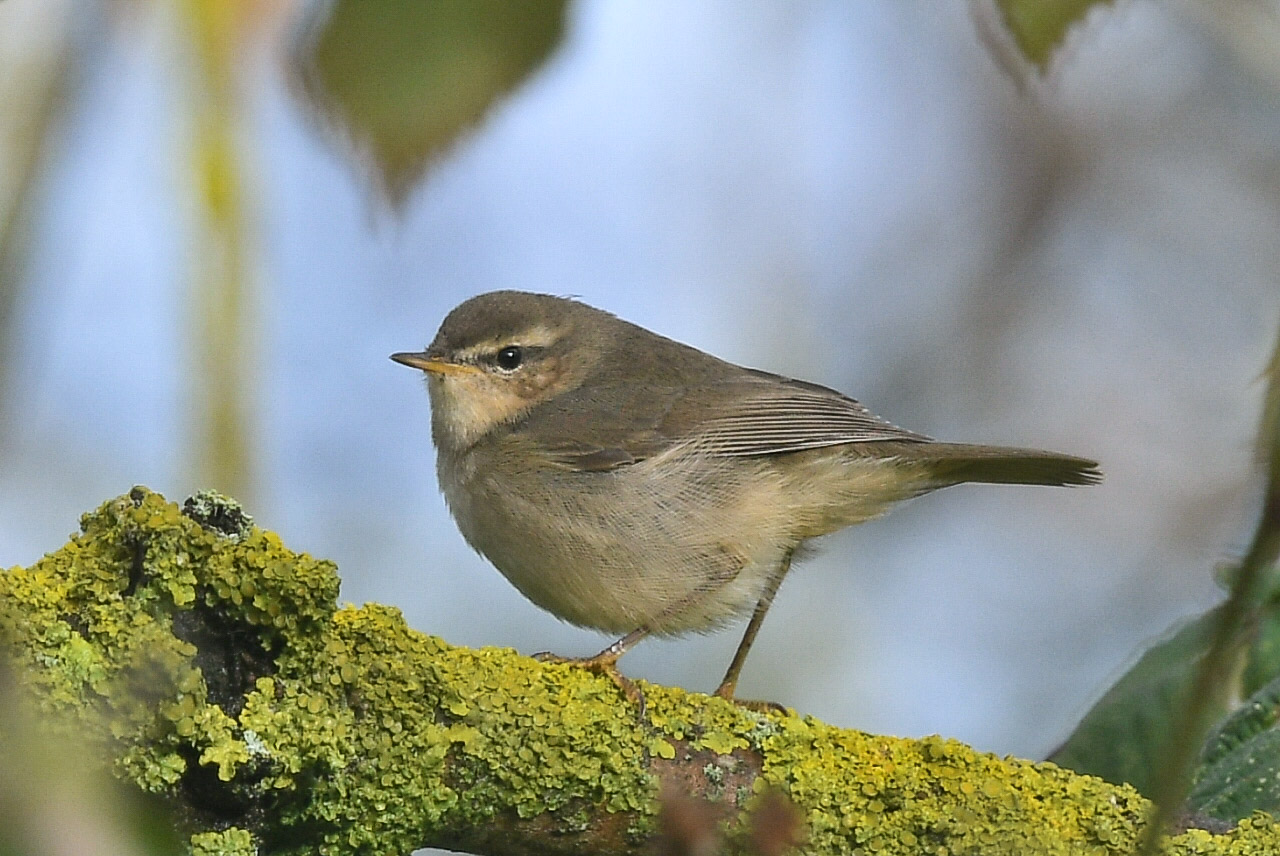
Three Radde’s Warbler provided a little variety – one remained in Orkney on Westray on 7th, with another seen in Orkney on Stronsay on 12th; and another was seen at Helvick Head (Co.Waterford) on 8th.
Barred Warbler this week were found at Kearney (Co.Down) on 8th-9th, in Suffolk at Landguard NR on 9th-13th, and on Burra (Shetland) on 12th.
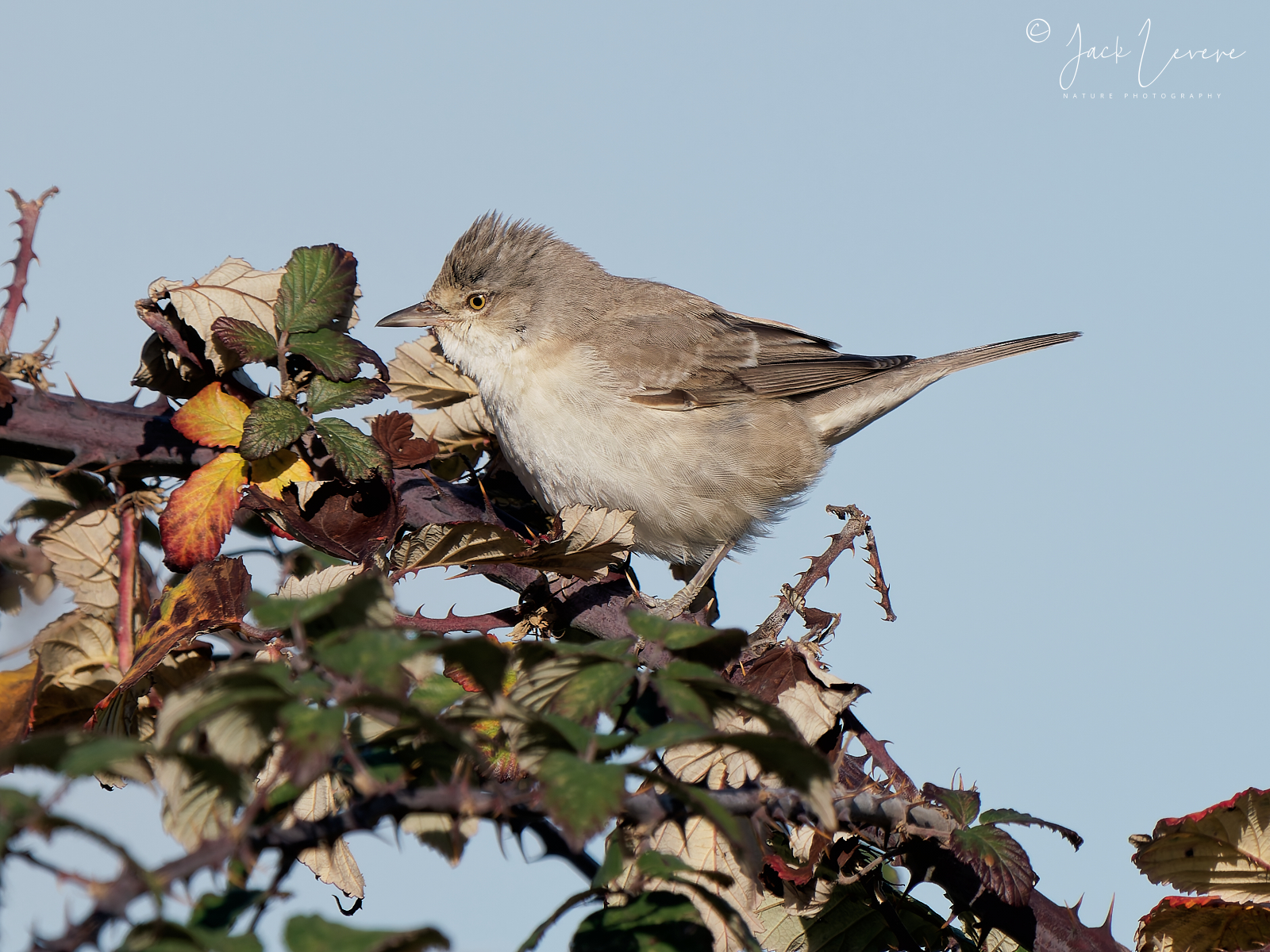
A Blyth’s Reed Warbler was trapped and ringed in Suffolk at Kessingland on 8th.
Further cementing Suffolk’s dominance in the news lately, three Zitting Cisticola remained at Walberswick on 7th-9th.
A Rose-coloured Starling was found in Lincolnshire in a garden near Gainsborough on 10th.
Five Red-breasted Flycatcher were to be seen this week – one at Lunan Bay (Angus) on 7th; birds in Co.Waterford at Brownstown Head on 7th-9th, and Helvick Head on 7th-10th; and, on 12th, on St Mary’s (Scilly) and Islay (Argyll & Bute).
Pick of the pipits this week was by some margin the Shetland speciality Pechora Pipit, found in a Scalloway garden on 8th-9th.
Shetland also delivered Olive-backed Pipit on Mainland at Wester Quarff on 9th and Grutness on 11th. Additional birds were seen at South Gare (Cleveland) on 8th-13th, and The Lizard (Cornwall) on 8th; and a further probable at Gibraltar Point NNR (Lincolnshire) on 7th.
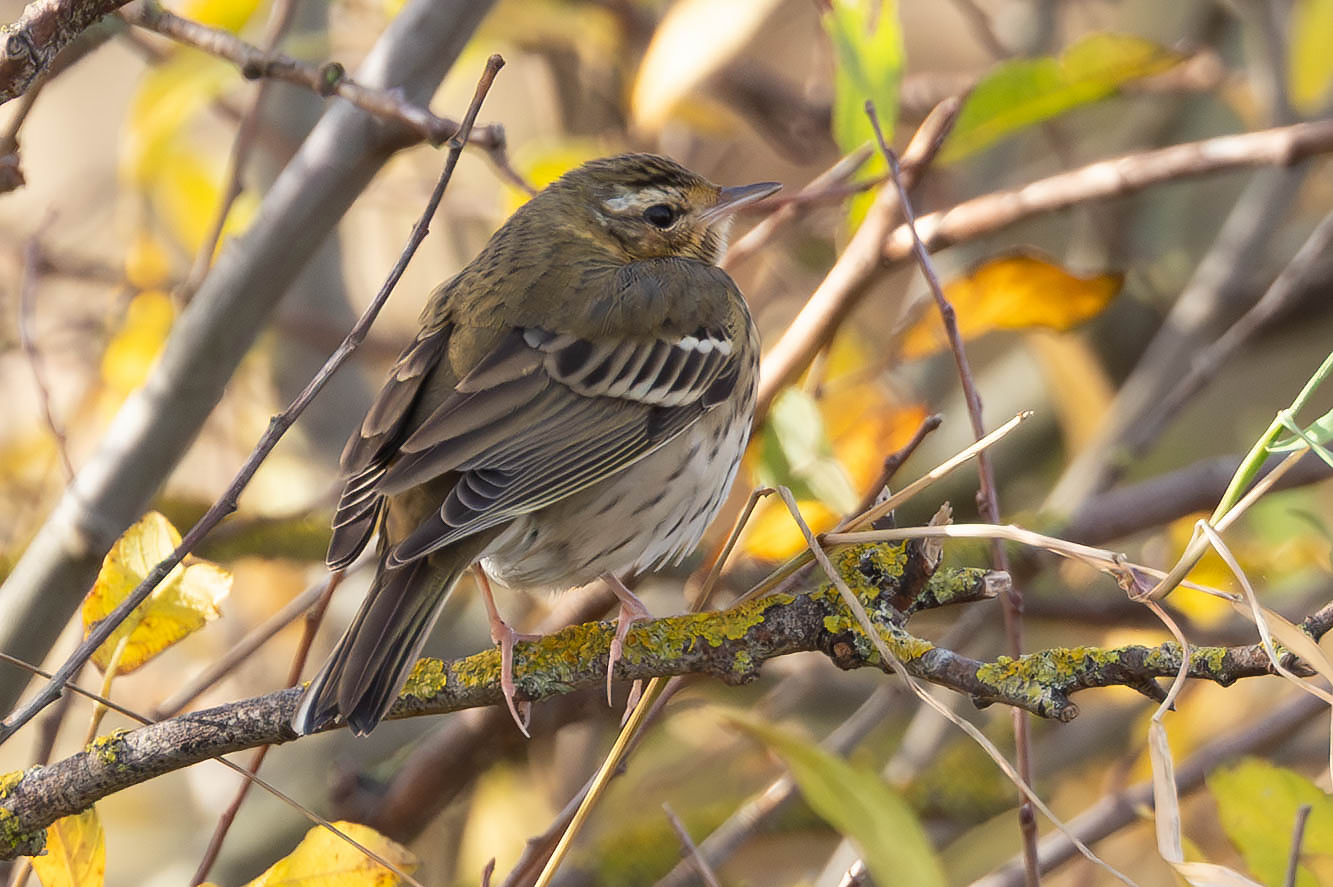
A probable Richard’s Pipit was noted over Aust Warth (Gloucestershire) on 9th; a confirmed bird was seen at Bridlington (East Yorkshire) on 12th, and another East Yorkshire sighting on 13th at Bempton Cliffs RSPB.
A small, late flush of Serin arrived in southern England on 13th – birds were noted at Dungeness (Kent), and in Dorset at Portland and Hengistbury Head.
A late-running Common Rosefinch was on Shetland Mainland at Exnaboe on 8th.
Shetland also gave us Arctic Redpoll in Scalloway on 8th, and on Fetlar on 11th…
…a Little Bunting at Scousburgh on 7th-12th; and one of the recent Black-faced Bunting was still present on Fair Isle on 7th-9th.
Finally, the recent and presumably boat-borne Boat-tailed Grackle in Hampshire had moved on from Calshot this week, but was seen not a million miles away in a garden at Holbury on 7th and again on 11th-13th.
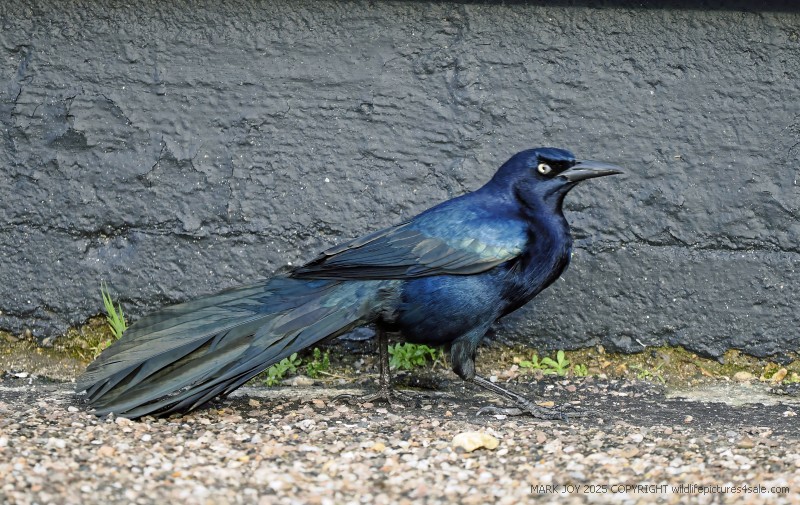
The overseas news picks up where the prior week left off, with the ongoing Black-faced Bunting arrivals in Europe further augmented in the past week with still more birds found – one in Belgium at Zeebrugge Port on 8th; and further birds trapped and ringed in the Netherlands, on 10th at Amsterdamse Waterleidingduinen, and on 12th at North Holland Dune reserve.
Further Netherlands news this past week relates to the drake Spectacled Eider, still present off Texel on 7th-13th; and the Western Swamphen still at Zevenhuizen on 9th-12th.
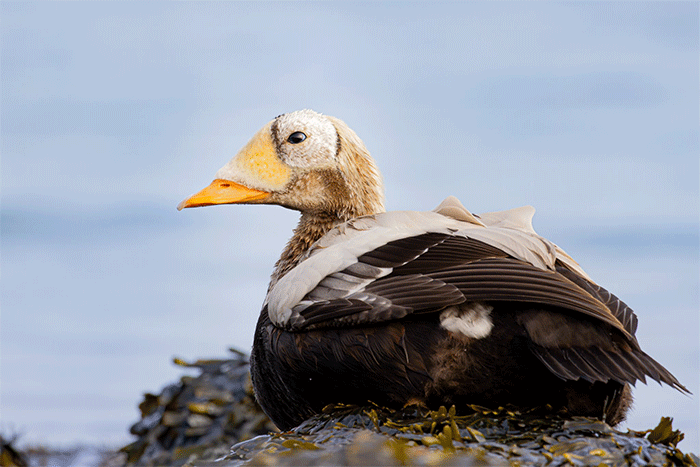
In France, the Sociable Lapwing remained at Digue de Pissaloup on 8th-9th; and a Forster’s Tern was seen again at Mogueran on 11th.
In Spain, the settled Cape Gull remained in Laredo on 11th.
Up on Iceland, a Baltimore Oriole was seen at Sel on 13th.
Out on Cape Verde, the Western Willet was still to be seen on Boa Vista on 7th-12th.
And finally, news from the Azores, where the Ruby-crowned Kinglet was still present on Corvo on 9th.
We’re now heading into the third week of November, traditionally a quiet time of year. Though not entirely – a glance at the history books reveals this was the week, almost 60 years ago, in which the one and only Brown Thrasher on the British List was found, on 18th November 1966 on Durlston Head (Dorset). A momentous bird at the time, and one that seems increasingly isolated on the British list with the passage of time.
With the recent Hampshire Boat-tailed Grackle, another ostensibly unlikely American vagrant, very much in the forefront of our thoughts lately, one wonders what the reaction of birders and, notably, BOURC would be should a potential first for Britain Brown Thrasher arrive on the shores of the English Channel nowadays… Would it enjoy a warm welcome?
Idle speculation aside, those same history books also tell us that the coming week remains a classic for Desert Wheatear and, from the east, we’ve a sporting chance of something from a decent range of buntings, pipits, thrushes and warblers.
Northerlies in the latter half of the coming week look set to slam the door in much easterly origin action, but hopefully not before a Hume’s Warbler or two slip through to reach us. The coming week is traditionally a good one for them.

Jon Dunn
14 November 2025
Many thanks to all this week's contributors for your photos and videos
Get Breaking Birdnews First
Get all the latest breaking bird news as it happens, download BirdAlertPRO for a 30-day free trial. No payment details required, and get exclusive first-time subscriber offers.
Share

















